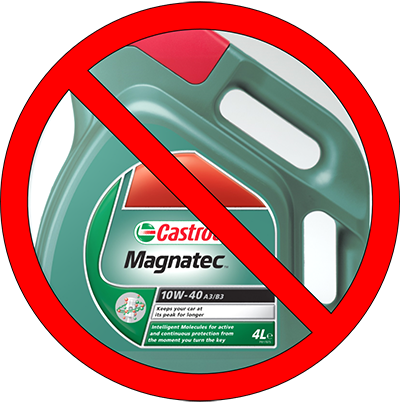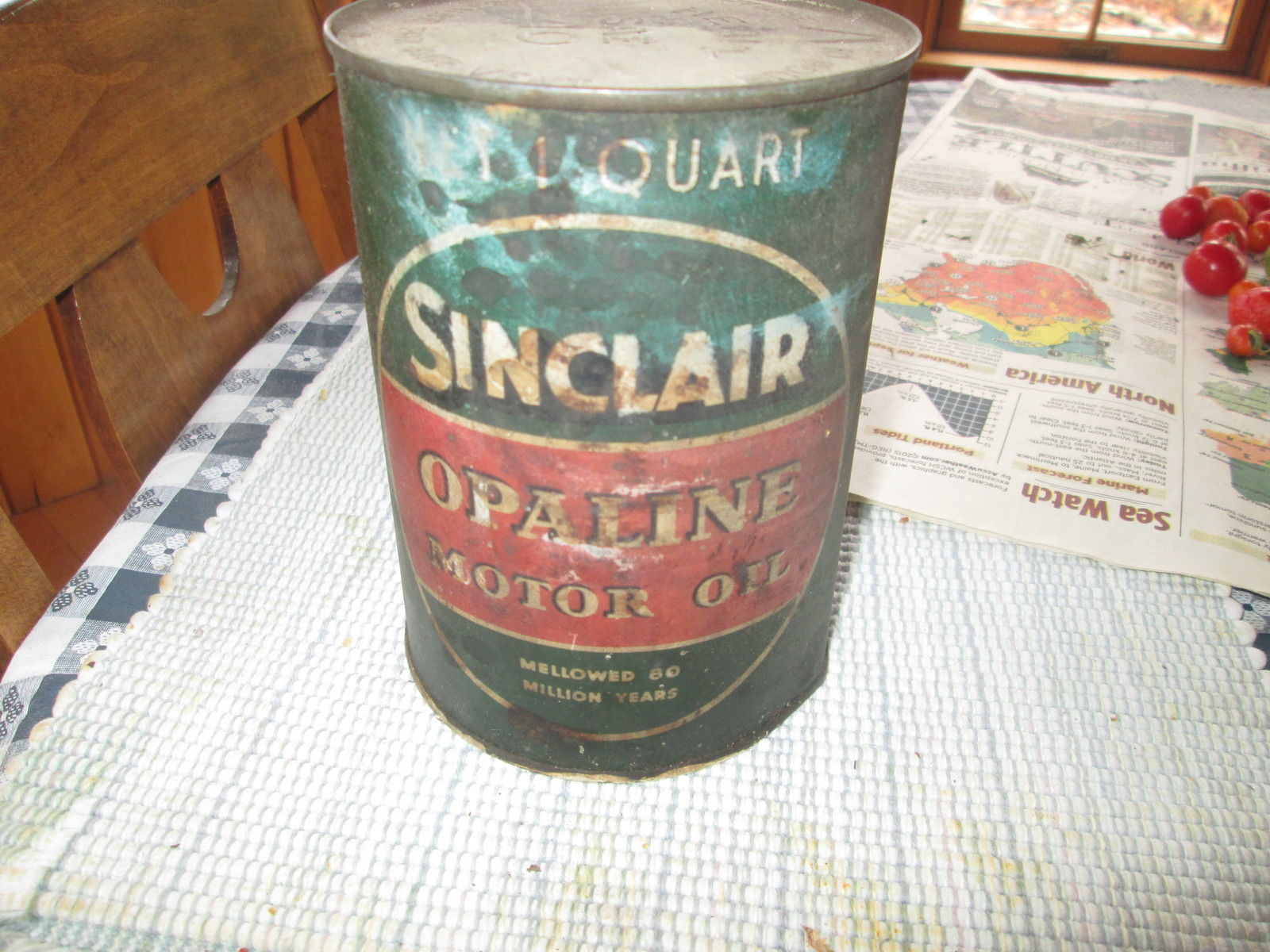|
Oil
No mechanical device will operate very long without
ample lubrication, neither will the Model T cars. Before
your car is shipped the oil is drained out of the engine
crank case and the oil reservoir. Before starting, the
transmission cover should be removed and two quarts of
high grade engine oil should be poured into the
transmission and a half gallon emptied into the engine
crank case through the breather pipe. Thereafter all
replenishments are made through breather pipe.
There are two drain cocks in the flywheel casing which
acts as the oil reservoir. The oil level should be
between these two cocks. If it runs out of the upper,
there is too much oil, and it should be allowed to drain
out to that level. If on opening the lower drain cock
the oil does not run out being at a lower level, a new
supply is needed.

The Kind Of Oil To Use
Here is an excerpt from the 1911 Ford
Model T Operating Manual:
We recommend only light high-grade gas engine oil for
use in the model T motor. A light grade of oil is
preferred as it will naturally reach the bearing
surfaces with greater ease, and, consequently, less heat
will develop on account of friction. The oil should,
however, have sufficient body so that the pressure
between the two bearing surfaces will not force the oil
out and allow the metal to come in actual contact. Heavy
and inferior oils have a tendency to carbonize quickly,
also gum up the piston rings and valve stems.
We recommend using 10W-40 or 15W-40, since it is
the only oil left on the market with the trace elements,
like zinc and phosphorus, that are required to reduce
wear on the push rods and cam shaft.
I personally use Valvoline XLD
Premium 15W-40, it's inexpensive and performs
perfectly.
 WARNING! WARNING!
Ensure you
DO NOT use any oil with names like "Magnatec" or similar
Magnetic Oils - while they are fine with
modern engines, these oils contain magnetic particles
which attracts the oil to metal surfaces within the
engine and gearbox. These oils are damaging to a
Model T, because of the magneto. Magnetic oils will
gum up the magneto and prevent it working very quickly.
Our best advice is, use no-frills oil, or look for a
high-grade oil that specifically states what it
contains.
Should I use synthetic or
high-detergent oil in my Model T?
This is the issue of much debate amongst Model T
enthusiasts. My personal recommendation is that if you
are unsure of what to use and you don't wish to
experiment, use products that are identical or similar
to those in existence when your Model T was made and you
can't go wrong. That means no synthetic or
high-detergent oil.
How much oil does a Model T engine
hold?
About 4 litres. A good rule of thumb is that you need to
fill the engine oil until the oil pours out when the top
petcock is open. If the oil does not pour out, then add
more oil.
Types of Oil
When Ford started building the
1909 Model T in the fall of 1908 there were not oil
grades such as we have become familiar with today. The
Society of Automobile Engineers (SAE) which was formed
in 1905 did not identify oil grades for several years.
The industry standards for motor oil were far different
from what we have today. There were oils designed for
motor car ?cylinder use? in other words, oil to use in
the crank case. These types of oils were available in
three (or more depending on the oil company) basic
grades known simply as ?Light?, ?Medium? and ?Heavy?
 So
we know now that Ford specified the oil grade as
?Light?. But what does that mean exactly? How do we know
what ?Light? oil is when looking at the oil available in
the auto part store or Wal Mart? So
we know now that Ford specified the oil grade as
?Light?. But what does that mean exactly? How do we know
what ?Light? oil is when looking at the oil available in
the auto part store or Wal Mart?
The guys who collect oil cans know the answer, because
there was a period of time in the 1930?s ? 1940?s when
oil cans were marked with both the old ?Light, Medium or
Heavy? designations and the current designations.
Here is an
example of a ?Heavy? motor oil from a Sinclair can of
about 1940.
So we now know the answer.
Here is a cross reference chart:
-
Light = SAE
20
-
Medium =
SAE 30
-
Heavy = SAE
40
So we know definitively that Ford
specified SAE 20 when your Model T was new. Back in
those days there was no such thing as detergent oil, and
multi ? viscosity oil was also decades in the future.
Let?s consider the advantages and disadvantages of each
of these technology advances.
Detergent oil sounds like the oil has some sort of soap
in it right? In the 1950?s detergent oil was being
introduced to the motoring public and horror stories
abounded, particularly among folks who did not know
anything about motor oil. There was an old wives tale
that if you used detergent motor oil in a old engine
that somehow all the oil residue, dirt and sludge that
had accumulated would come loose and destroy the engine.
Of course it wasn?t true.
Detergent oil suspends impurities in the oil. These
impurities are too small to be captured by oil filters,
and consist of such things as soot, combustion chamber
by products, and dirt. These things combine to turn the
oil dark over time. This is a good thing that you want
to happen. When you drain detergent oil all those non ?
oil compounds drain out with the oil.
Oil viscosity is determined by the rate an oil can be
poured through an industry standard orifice at industry
specified temperatures. An oil that meets these
standards for SAE 30W is branded as such. An oil that
meets the standard for SAE 5W is branded as such. The
?W? stands for ?Winter?. Obviously a lower number flows
better in winter test conditions than an oil with a
higher number.
Multi Viscosity oils were developed to help reduce
engine wear. Most engine wear happens when oil is cold
and thick. The oil takes longer to reach wear surfaces
when it is too thick to flow properly. This is a
particularly serious problem for the Model T because
unlike modern cars a Model T does not have an oil pump.
So we do not want oil that is too thick to flow.
How does multi viscosity oil work? It sounds like the
oil transforms itself when it gets warm doesn?t it?
Again, this is a false statement generated by folks who
don?t understand oil. Multi viscosity oil essentially
stays the same when it gets warm. It does not get
thinner like a straight weight oil would. This is a good
thing for your Model T.
How about ?Zinc? in motor oil? It was greatly reduced in
most motor oils around 2007. Does this mean my Model T
is going to seize up or suffer some horrible engine
damage?
No it doesn?t.
ZDDP was first specified as an automotive additive for
the 1955 model year. The reason was that new 1955 cars
with ultra high performance engines were using stiffer
valve springs to enable higher RPM which yielded higher
horsepower. These cars used ?flat tappet? lifters along
with overhead valves. AS RPM increases, the amount of
inertia generated by the camshaft parts requires
stronger springs to close the valve and to keep the
lifter from hopping up and down on the camshaft. The
increased friction from the super strong valve springs
in these 1950?s cars caused rapid wear of the camshaft
and lifters. This had never been a problem in older
engines, and it was never a problem in the Model T Ford.
Bottom line ? do you need high ZDDP motor oil for your
Model T? No.
With all this being considered, what oil is best for the
Model T? Let?s consider one more thing ? operating
temperature where you live. If you live in a hot, desert
environment such as Saudia Arabia where cool morning
temperatures are 85 ? 90 degrees F and afternoon
temperature reaches 120 degrees F you will want to use
something like 10W-40.
In areas with average temperature between 40 and 110
degrees F you will want to use 5W-30.
Operating a Model T in winter weather, with temperatures
between 0 and 4 degrees F you will want to use 0W-20.
How often should the oil be
changed in a Model T Ford? Again we look to the
recommendations from back in the day.
So the answer should be to change
oil every 1000 miles or every year, which ever comes
first.
Recap:
Use any brand of oil that you like. Like expensive
synthetic oil? Fine, just remember that you are draining
it in 1000 miles or one year from now, which pretty much
eliminates any advantage of synthetic oil.
Use a grade of oil that is suitable for the temperature
that you operate the car.
Your Model T holds one US gallon of oil. Over filling
will result in lots of blue smoke while the engine is
running.
|

